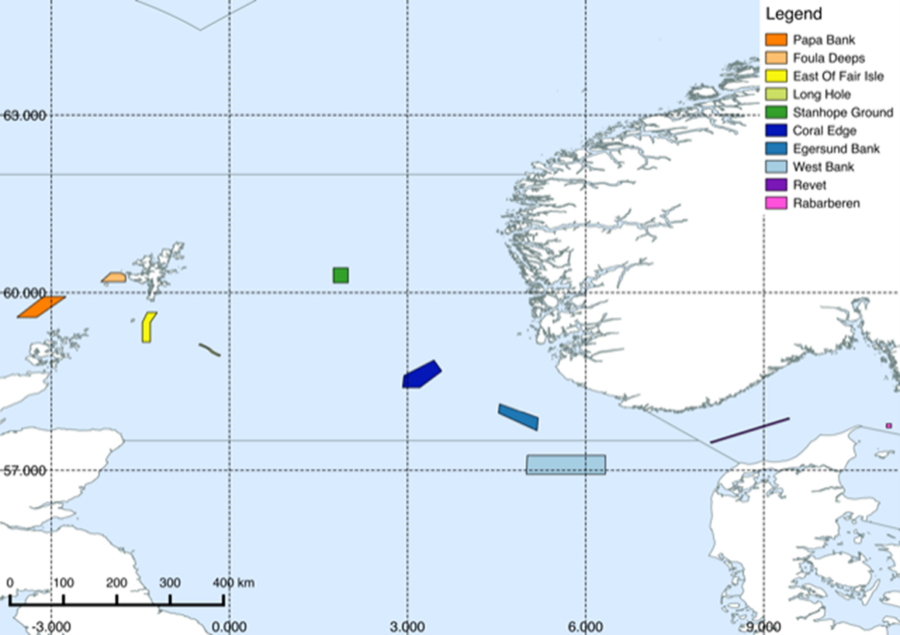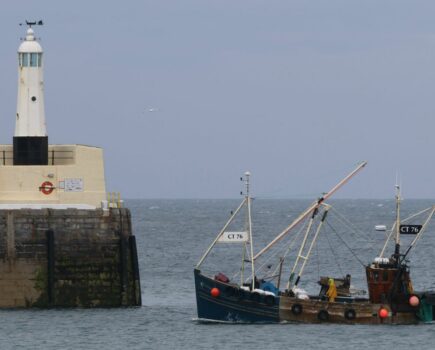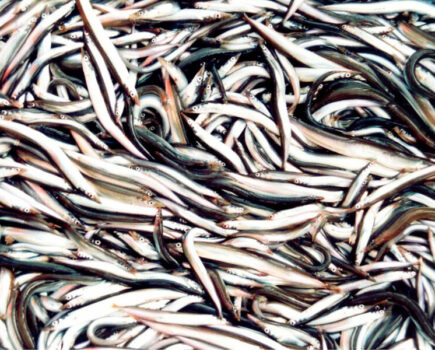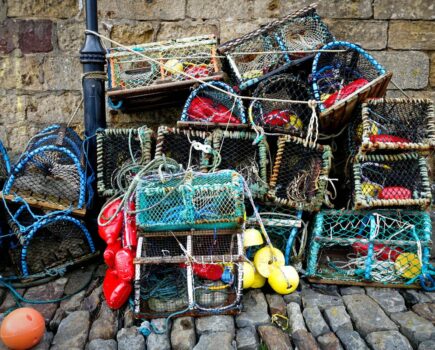International plan for North Sea cod fishery
Push for fair TAC as Brussels calls for 45% cut
North Sea fishermen and their leaders across Europe are fighting to get a fair deal on North Sea cod fishing opportunities in 2021, reports Tim Oliver.
An international coalition including the UK, Norway and EU member states has put forward a series of proposals for sustainable management of the fishery that will help to rebuild the cod stocks, while at the same time ensuring that vessels can fish viably.
Image: The closed areas to protect spawning and juvenile cod proposed by the international North Sea industry. The areas will be closed mostly in the spring period.
The plans include a series of closed areas to protect spawning and juvenile cod, and a reasonable TAC. The coalition stressed that the TAC needs to be set at a level that allows boats to keep working in the mixed demersal northern North Sea fishery without risking early closure because their cod quotas are exhausted.
Their plans come as the European Commission calls for a 45% cut in 2021 in the TAC, which suffered a 54% cut this year compared with 2019 – although ICES has proposed a reduction of only 17% for 2021 based on an MSY approach.
In a consultation ‘non-paper’ on stocks and fishing opportunities in 2021, the Commission says that on North Sea cod ‘the ICES advice continues a very pessimistic picture’, and that ‘continuation of additional remedial measures will be necessary’.
At the same time, ICES has recommended a 66% increase in the North Sea haddock TAC for 2021, which would create serious tensions and the risk of a choke in the vital northern mixed demersal fishery.
In its paper spelling out detailed plans to manage the North Sea cod fishery and its commitment to sustainability, the international coalition says: “Maintaining a pathway for the recovery of North Sea cod remains a priority for fishermen, managers and the wider stakeholder community.
“Opinion in relation to severity and speed of the measures required to deliver that recovery depends on which stakeholder category is voicing the opinion. The catching sector remain at odds with the managers on the speed of recovery based on the biological restrictions that run counter to what fishermen know about stock biology and their experience of how long management measures take to have effect.”
It says its proposals for a network of seasonal closures to protect spawning cod, measures to protect juveniles and improvements to selectivity show that its commitment to, and support for, rebuilding North Sea cod are ongoing.
The industry has ‘once again adopted a position that, when setting a TAC for NS cod, must take account of a wide range of factors, including the complexities that flow from mixed fisheries, especially with regard to the socio-economic fallout from the landing obligation and the potential for chokes and the possible early closure of fisheries’.
The paper says that while the group recognises the need for a rebuilding strategy, its preference is still for ‘an approach that takes account of the biological cycles that will be required to deliver a recovery of the stock’. “We believe this strategy is more likely to deliver better results than a short, sharp, process-focused approach,” it says.
The group is also disappointed that survey results ‘have not been used to confirm fishermen’s observations, which are that recruitment of NS cod is ‘far above average’’.
Reality needed
Mike Park, chief executive of the Scottish White Fish Producers’ Association (SWFPA) and appointed chair of the international industry North Sea group, said there had got to be ‘some reality’ in setting the cod TAC for 2021.
He told Fishing News: “What comes across in our paper is that we understand we’ve got to recover cod and protect it as much as we can. That’s why the industry is proposing seasonal closures this year to protect the spawners, and we recognise the benefit of seasonal closures to protect juveniles as well, as do the closures put in place by Norway since 1 July.
“But there has got to be some reality, and a recognition of the tension in the mixed fishery that the fleet faces unless you set a reasonable TAC.
“There’s the growth of the hake stock, and also the fact that the North Sea cod stock is now gravitating northwards – in the last decade, it’s moved just short of 200 miles, so there’s a lot of factors in there.
“There’s a lot of European vessel activity now east of Shetland – modern Dutch and Danish and Norwegian seiners are all now operating in the Scottish zone as well, so there’s a lot of new dynamics happening in the fishery.”
He said an important new dynamic in the situation this year was the UK taking part in the negotiations as a coastal state, which would give it a strong voice in the management process.
“The UK, I would imagine, is now a big player with regards to cod. Norway has got a strong say as well, but the EU is almost a minor party now in this, and it would be wrong for the EU to overly influence the outcome of North Sea cod.”
Mike Park said that one thing that didn’t change was the complexity of the northern mixed demersal fishery, highlighted by the fact that as Brussels calls for a 45% cut in the cod TAC, the science is suggesting a 66% increase in the haddock TAC.
“We’ve got to find a way round it. To just bluntly slash the cod to try to hit some political environmental objective ignores the reality that there are wider things in play, and there is the socio-economics of the fishing sector as well.
“We can’t just blindly set a TAC because that’s what the science says – we need to see the socio-economics of it to ensure we allow the fleet to operate to the best of its ability, whilst keeping sustainability firmly in view.”
He said the negotiations on North Sea fishing opportunities in 2021 would be ‘difficult but also extremely interesting’ given the new dynamics of the UK taking part for the first time as an independent coastal state, along with Norway and the EU.








